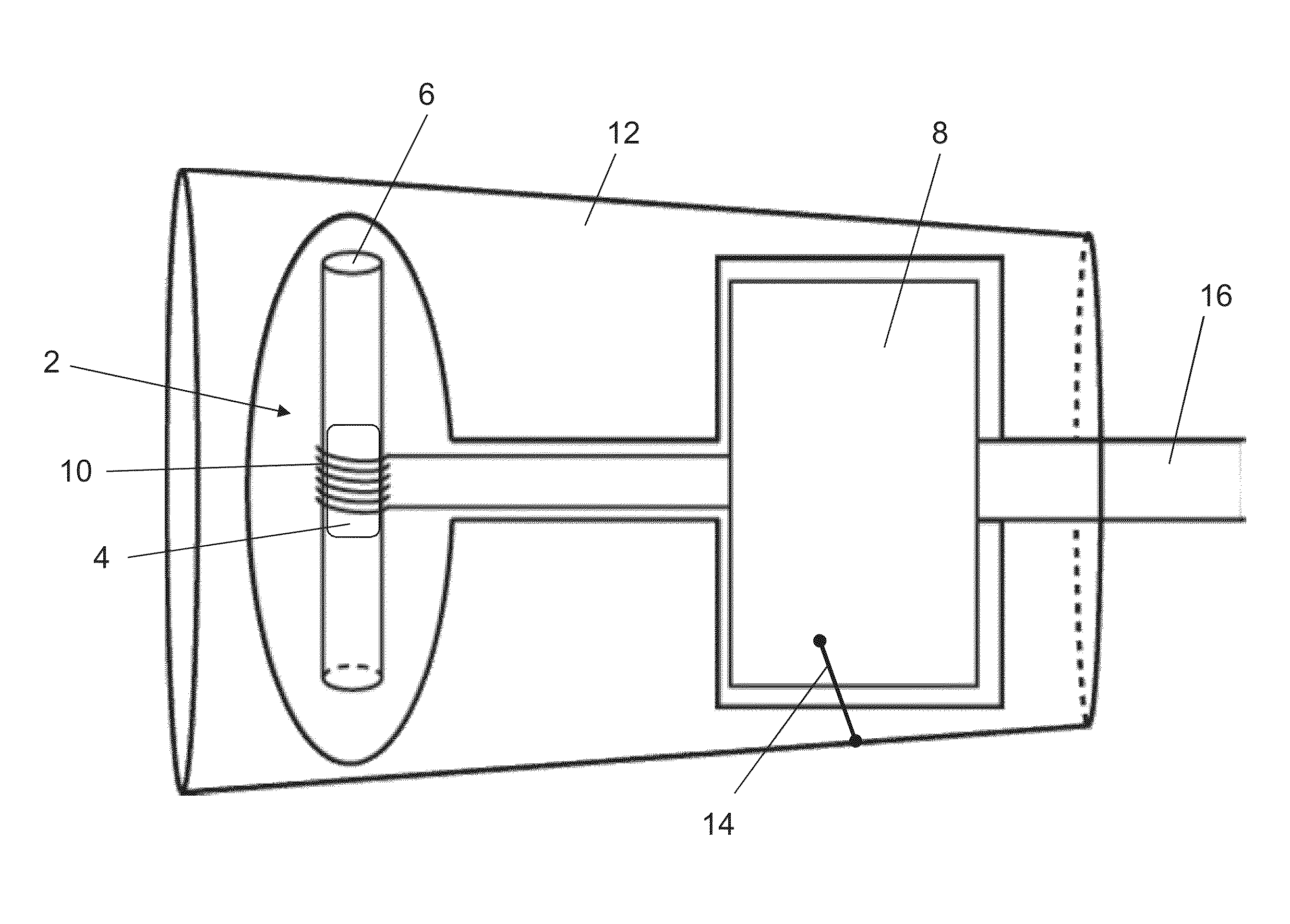Isolating MR Magnetic Field Probes from External RF Irradiation
a magnetic field and probe technology, applied in the field of isolation of mr magnetic field probes from external rf irradiation, can solve the problems of anisotropic measurement corruption, filtering and trapping cannot be employed to reduce the net coupling between the two systems, and the signal level of the rf transmit pulse is reduced, and the magnetic field dynamics is uniform, the effect of minimal influence on the magnetic field dynamics
- Summary
- Abstract
- Description
- Claims
- Application Information
AI Technical Summary
Benefits of technology
Problems solved by technology
Method used
Image
Examples
Embodiment Construction
[0093]An arrangement for carrying out dynamic magnetic field measurements in a MR imaging or MR spectroscopy apparatus is shown in FIG. 1. The arrangement comprises a magnetic field probe 2 featuring a MR active substance 4 contained in a small tube 6. The arrangement further comprises means for pulsed MR excitation of the substance and means for receiving an MR signal generated by the substance, namely a tuning / matching circuitry 8 with a coil 10 arranged around a central portion of tube 6.
[0094]A shield 12 against external high-frequency electromagnetic field irradiation is arranged surrounding the magnetic field probe 2. The shield 12 has at least one RF contact 14 to the RF ground of the field probe 2. The tuning / matching circuitry 8 has at least one cable 16 (or group of cables) exiting through an aperture in the shield 12 and connected in known manner to external control, receive or transceive devices. As also generally known, the cable might be equipped with cable traps. In t...
PUM
 Login to View More
Login to View More Abstract
Description
Claims
Application Information
 Login to View More
Login to View More - R&D
- Intellectual Property
- Life Sciences
- Materials
- Tech Scout
- Unparalleled Data Quality
- Higher Quality Content
- 60% Fewer Hallucinations
Browse by: Latest US Patents, China's latest patents, Technical Efficacy Thesaurus, Application Domain, Technology Topic, Popular Technical Reports.
© 2025 PatSnap. All rights reserved.Legal|Privacy policy|Modern Slavery Act Transparency Statement|Sitemap|About US| Contact US: help@patsnap.com



